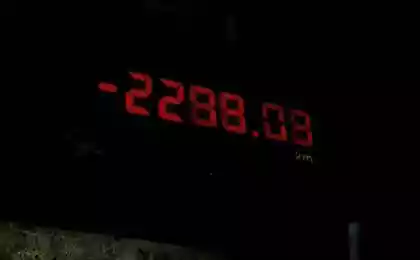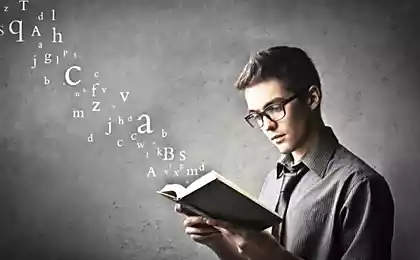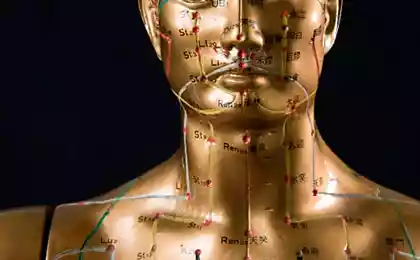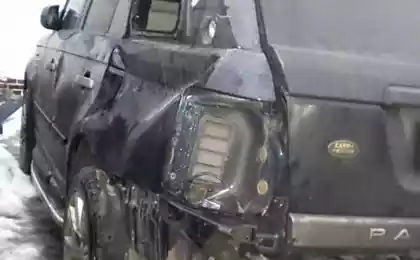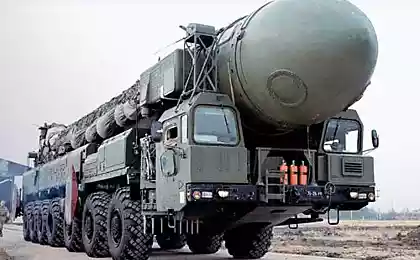1050
Key invention in the automotive world
Using familiar conversation automotive terms - the internal combustion engine, "automatic", air conditioning, disc brakes, ESP - we do not even think about the history of their origin. In this post will be restored justice, and we remember when and on what vehicles were the innovations that we use every day.
Will ph 18, not counting the start.
Source and photos
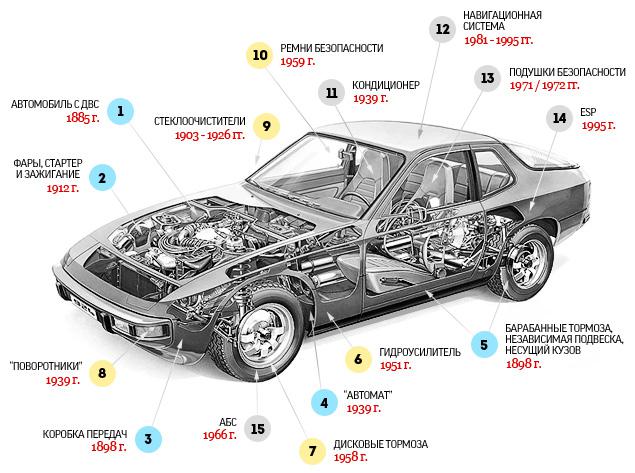
Vehicles with internal combustion engines
When: 1885
Who: Benz
Nikolaus Otto, built in 1878, the first four-stroke internal combustion engine is undoubtedly gave great impetus to the automotive industry. However, equally important was the invention of Karl Benz in 1885, a car with a combustion engine.
However, this fact can hardly be called undeniable: many scientists and engineers from different countries came to the self-propelled carriage with an internal combustion engine almost simultaneously. For example, Austrian Siegfried Marcus in 1883 and the German Gottlieb Daimler in 1886. However, a major innovator is assumed Benz. Incidentally, the first single-cylinder internal combustion engine it "Motorvagena" developed less than one horsepower.
The first serial car with a diesel engine was the Mercedes-Benz 260D in 1936. Turbodiesel came almost 40 years later: in 1979, a "pioneer" was the Peugeot 604.
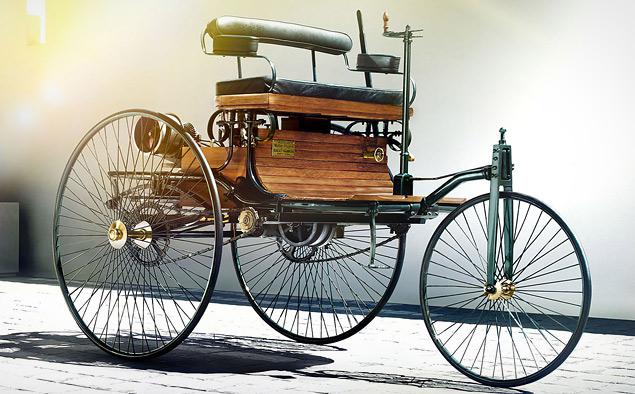
Lights, starter and ignition
When: 1912
Where: Cadillac Model 30 Self Starter
All these quite familiar to the attributes of a modern car appeared more than a century ago, in 1912, at one and the same car - Cadillac Model 30 Self Starter («self-starting"). And in his headlights standing lamp has a solid tungsten.
With this car drivers forget about the acetylene carbide, of inefficient lamps with carbon filament and the "crooked starter" used to start the engine earlier. In addition, it is believed that the starter is "killed" while the nascent market for electric cars - because until then to maintain the car with the engine was not so easy.
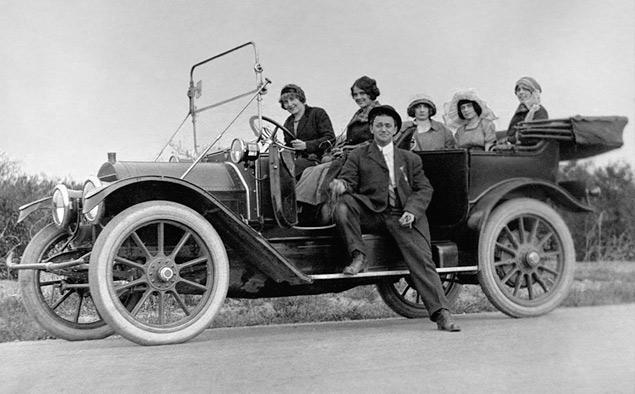
Transmission
When: 1898
Where: Renault Voiturette
December 24, 1898, Louis Renault took up the challenge to pass on his Voiturette up the steep Rue Lepic Paris street that in Montmartre. Thanks to the gearbox he did it - and he immediately got the first 12 orders for its "wagon".
In 1899, Louis and his brothers founded the company Renault Freres, which established a production model Voiturette Type A, equipped with powerful enough for the time (1, 75 horsepower) engine "De Dion-Bouton" and the world's first transmission (three forwards, one reverse). Driving direct transfer to propeller shaft is still used on rear-wheel drive cars.
The most common in our time front-wheel drive come up with the Americans in 1929, embodied the idea of a car Cord L29. But the truly mass-produced front-wheel drive only started in the second half of the last century
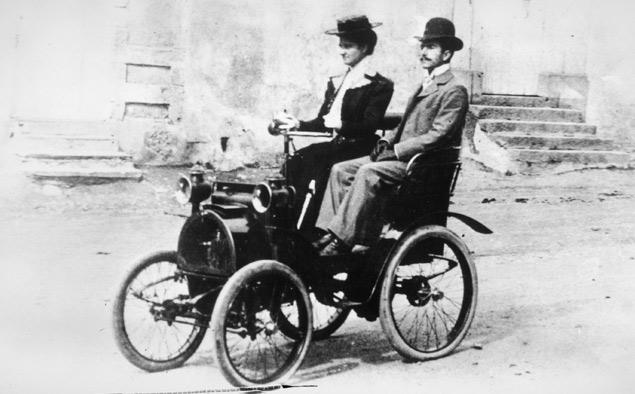
"Automatic»
When: 1939
Where: Oldsmobile Custom Cruiser
8
Not surprisingly, the "machine" invented lazy Americans who live in the country straight as an arrow, highways.
The first lucky 1939 steel buyers 8 model Oldsmobile Custom Cruiser, equipped with a standard four-HydraMatic transmission with torque converter.
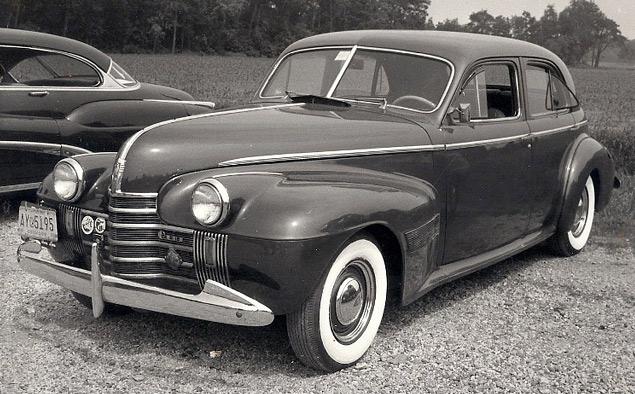
Drum brakes, independent suspension, monocoque
When: 1922
Who: Lancia Lambda
As is the case with the starter and lights, all these innovations have appeared on the same machine, and at the same time - it was a Lancia Lambda.
On the "lambda" was first used monocoque for the first time applied the drum brakes on all four wheels (for rear-wheel drive cars), as well as independent front suspension. Total has sold about 13 000 copies Lancia Lambda.
Wheel-drive vehicles with internal combustion engine - Spyker the HP 60 - appeared much earlier, in 1903. Incidentally, with all three differentials lock.
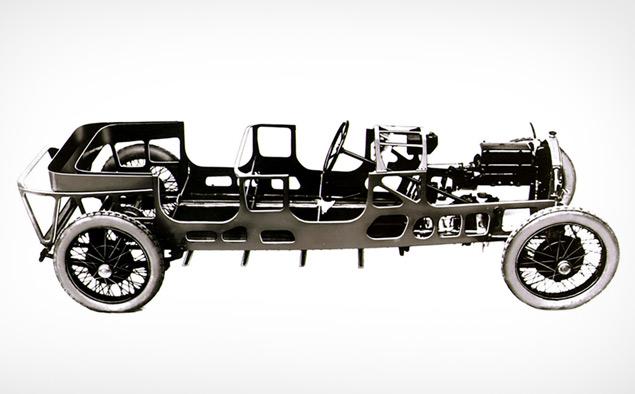
Power
When: 1951
Who: Chrysler Crown Imperial
In the first quarter of XX century twist, the "steering wheel" to help only the biceps - no amplifiers was not provided. Later, in the 30s, there were complex and noisy pneumatic systems that facilitate the participation of drivers, but did not provide much comfort.
And only in 1951, Chrysler Corporation has fitted to its huge upmarket sedan Chrysler Crown Imperial world's first power Hydraguide. In Europe GUR first appeared at the French model Citroen DS 19 in 1954
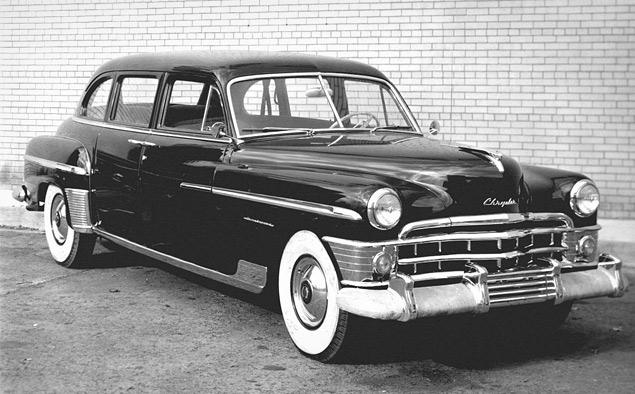
Disc brakes
When: 1958
Where: Citroen DS 19
The same Citroen DS 19, but four years later, in 1958, he became a "pioneer" in another area: vehicles with disc brakes.
In this way, the list of innovations DS 19 does not end there: he had front-wheel drive, excellent aerodynamics (Cx = 0, 3), hydropneumatic suspension and all-wheel steering with only one needle. Not surprisingly, the first day of sales of Citroen has received 12 000 applications for the new model.

"Turning»
When: 1939
Where: Buick Roadmaster
Perhaps if all current drivers knew that I had to go through to motorists since the beginning of the XX century, to finally reach our usual electrical "turn signals" that they would use them more often.
First there were the special lanterns, then mechanical pointers as arrows indicating the direction of travel, and only in 1925, Edgar Waltz patented the modern "turn signal". But to appear on production cars he was destined to only 14 years later - after the expiration of the patent. The first car from the direction indicators became Buick Roadmaster 1939.
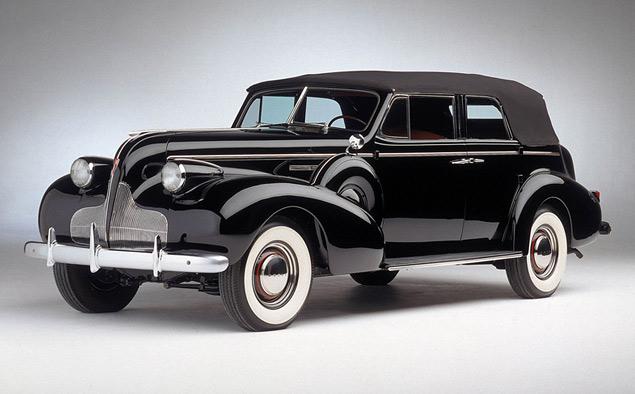
"Janitors»
When: 1903/1917/1926 years
Who: Bosch
Women's contribution to the history of automotive safety - "wipers". In winter 1903 the American Mary Anderson, watching the torment his driver in heavy snow (he always had to run out of the machine and clean the glass), I broke down and came up with a mechanical drive that is patented. In 1917, the "wipers" Power has patented another woman - Charlotte Bridzhvud. A few years of its invention lain on the shelf until 1926 was not appropriated firm Bosch. In the same year, electric "brush" appeared simultaneously on the huge number of cars of different brands.

Three-point seat belts
When: 1959
Where: Volvo PV 544
Of course, who else, if not the "Volvo"? The Swedish company almost since its inception has paid great attention to the safety of their vehicles, improves the design of the body and safety systems, and carrying a large number of crash tests.
Despite the fact that the belts are used in various fields of mankind since the end of last century, it belongs to the same Volvo mechanism, which now makes the life of many people in an accident - a three-point seat belt. For the first time the device has appeared on the car Volvo PV 544. Before that, there were unpretentious two-point belts, however, match the effectiveness of a Swedish invention, they could not.
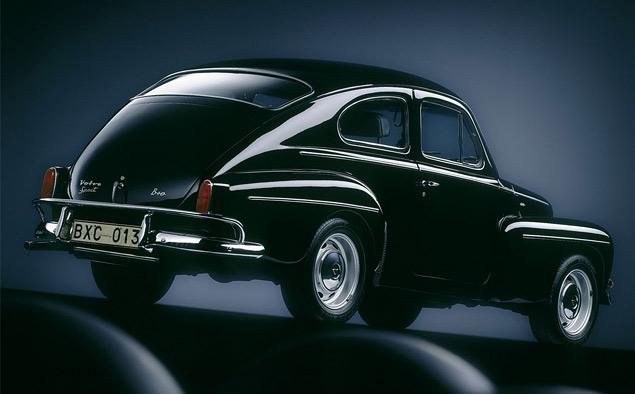
Air
When: 1939
Where: Packard Twelve Sedan
Nowadays, even budget cars flaunt climatic systems. However, the world's first car with the air conditioning was introduced only in 1939 at the Chicago Auto Show. It was Packard 12.
The cost of options is 274 US dollar: at the time - more than a third the price of a new full-size car! To turn the air conditioner driver had to stop the engine, and manually install the belt on the pulley of the compressor. In addition to the units located under the hood itself "refrigerator" and took up half the trunk with the task handled inefficiently.
The first sound system in the cars began to appear in the 30s of the last century. In the US in 1930 for $ 110 began selling radio Motorola, in Germany in 1932 Studebaker cars appeared "Music» Blaupunkt, a year later in the UK received a radio cars Crossley.

Navigation
When: 1981/1995 year
Where: Honda Accord and Vigor
"Yes, my 'Japanese woman' is already 20 years ago was" - is the most common phrase that can be heard by any fan of right-hand drive cars. That's right - many "gadgets" and electronic systems that we use today, first appeared on Japanese cars sold in the local market. For example, a navigation system.
The first navigation devices for cars appeared recently - about 30 years ago. Innovators steel from Japanese firms Honda, offered as an option for its Model Accord and Vigor in 1981 navigation system Electro Gyrocator, which worked ... without GPS! And in general, without any relation to satellites.
To use the navigator "Honda", the driver had to take a special plastic map of the area and place the cursor at the location in the current situation, and then determined the direction of the built-in gyro move the car and its speed and "navigation" plotted route. Complicated. And very expensive for that time - a quarter of the price of the same chord.
His first built-in navigation with GPS for the car appeared in 1995 on car Oldsmobile 88.
The first is like the navigator - Plus Fours Routefinder - appeared in the 1920s. It was a twist of paper maps between the wooden sticks that are rotated manually. Ten years later, the device appeared IterAvto, who did the same thing, but automatically, depending on the speed.
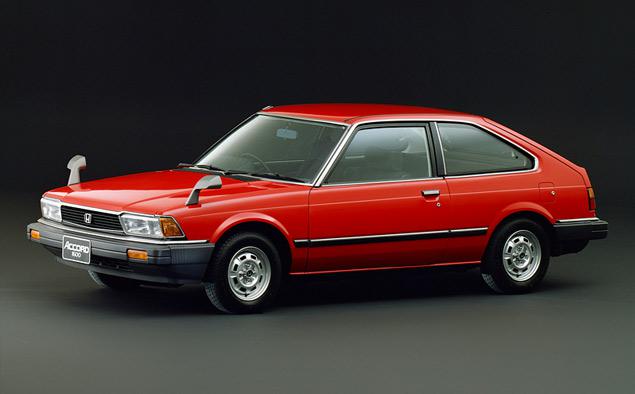
Airbags
When: 1971/1972 year
Where: Ford Taunus 20M P7B and Oldsmobile Toronado
In 1967, the US inventor Allen Breed invented ball collision detection sensor for a vehicle, which has become a key element of a new security system - airbags.
It was a very high demand innovation - seemingly now can not to wear! She first appeared on an experimental batch of cars Ford Taunus in 1971. The first production car with airbags year later became Coupe Oldsmobile Toronado. But widespread "pillows" were only in the middle 80s. And yes - you must wear seat yet.
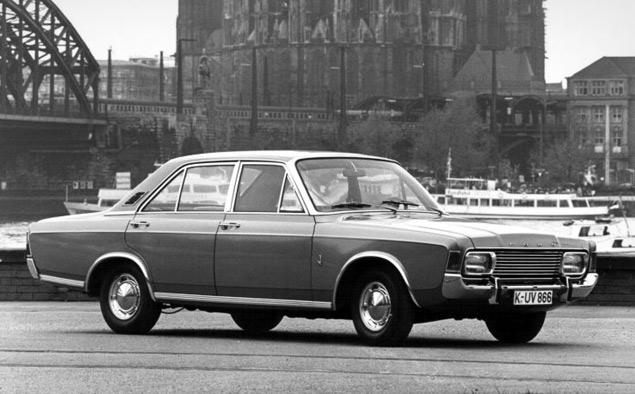
ESP
When: 1995
Where: Mercedes-Benz S 600
Bosch has since the beginning of the 90s trying to get ready to correct mistakes of the driver electronics. Work on the creation of the stabilization system (or a system of exchange rate stability) have led to the fact that in 1995, ESP first appeared on a production car, which has become the most chic sedan from Stuttgart - Mercedes-Benz S 600 in a monumental body W140.
Now Bosch is the largest supplier of sensors and electronics stabilization system, which, depending on the brand may have different names: DSC (BMW), ESP (Mercedes-Benz), VSC (Toyota) and so on. However, its essence remains the same: to help correct the error of the driver and prevent the development of a skid or drift car. In addition, current systems are able to deal with the threat of a coup on high machines - such as off-road.

ABS
When: 1966
Where: Jensen Interceptor FF
The first attempts to introduce anti-lock braking systems in cars were made in the 50's, when she was actively used as the railways and aviation. But the first car with ABS appeared only in 1966 - it was the British wheel drive coupe Jensen FF, which cost crazy money, and eventually sold around the world laughable edition of 320 pieces.
In the late 60's - early 70's ABS acquired American coupe Ford Thunderbird, Lincoln Continental, Oldsmodile Toronado, Chrysler Imperial, Cadillac Eldorado and the Japanese "chlenovoz» Nissan President. In Europe, electronic ABS from Bosch both used BMW and Mercedes-Benz in 1976 at its flagship models - the 7-series and S-class. It ABS sensors and actuators it uses for its stabilization system works.

In the history of the automotive industry were not only individual inventions - some of the cars themselves were a great innovation.
Electric
When: 1828
Who: Istvan Anosh Yedlik
The first mass-produced electric considered to be the Mitsubishi i-MiEV, which entered the market in 2009 (as in 2011 and sold in Russia). Earlier in sale doroguschy sports car Tesla Roadster, but in fact, even before there were electric cars with internal combustion engine - in 1828 the Hungarian physicist Anoshem Istvan Yedlikom was invented electric truck with four wheels.
At the end of the XIX century for the electric experiments it was seen by many European and American engineers, scientists and inventors. In 1899, the first Russian electric built Hippolyte Romanov. Petersburg inventor were designed four models of electric vehicles: double and quadruple strollers, as well as a 17-seater and 24-seater omnibuses. Double cab and 17-seater omnibus built on his project in 1899.
In the same 1899-built Belgian Camille Zhenattsi car La Jamais Contente clocked faster than 100 kilometers per hour on land (109, 4 kilometers per hour). At present, "a series of" electric vehicles launched a US-based Detroit Electric, which released its own electric vehicles from 1907 to the beginning of the Great Depression in 1929. In 1910 they reached a circulation of 2,000 copies. In 1910, William Anderson, who founded Detroit Electric on the basis of Anderson Carriage Co., established in the new electric steel-nickel batteries Edison, that allowed to drive 100 miles (160 kilometers) on a single charge, which doubled the mileage on standard lead-acid batteries.
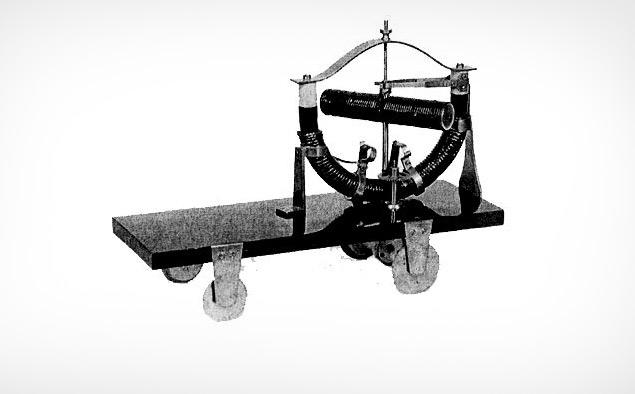
Hybrid
When: 1901
Who: Lohner-Porsche
As standard hybrid cars are made not so long ago: since 1997, when stood on the conveyor of the first generation Toyota Prius. Formally gibridomobil first appeared in 1901 - it was a four-wheel drive Lohner-Porsche.
Two petrol engines connected with a pair of generators that produced current for the electric motor in each of the four wheels. Excess energy is stored in batteries. In addition, changing the polarity of the electric generators, they can be used as starters for petrol engines.
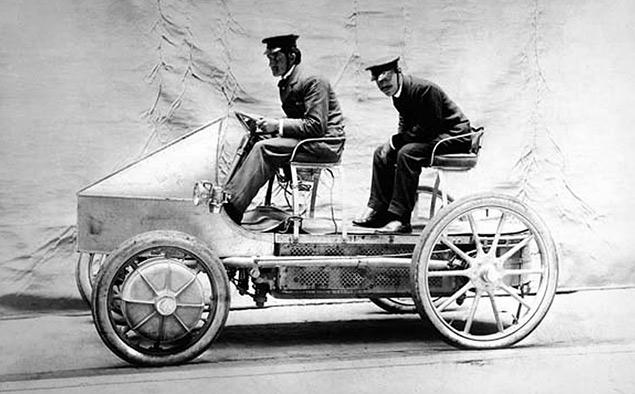
The hydrogen engine
When: 1806
Who: De Rivaz
The first working sample of an internal combustion engine running on hydrogen, has been developed by the Swiss de Rivaz in 1806 for the eponymous car. A hydrogen production car appeared in France in 1863 and it was called Hippomobile.
However, the emergence of the serial "vodorodomobilya" had to wait almost 150 years: it was the "Seven» BMW last generation engine V12, which developed the entire hydrogen energy and 337 228 Nm torque. Although, of course, "a series of" it can be called a very arbitrary: it was raised several hundred machines, mainly for PR-purposes.
That's all, thank you did not break a compilation!
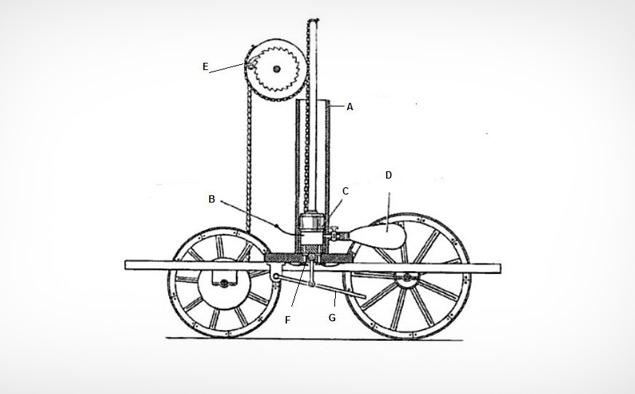
Source:
Will ph 18, not counting the start.
Source and photos

Vehicles with internal combustion engines
When: 1885
Who: Benz
Nikolaus Otto, built in 1878, the first four-stroke internal combustion engine is undoubtedly gave great impetus to the automotive industry. However, equally important was the invention of Karl Benz in 1885, a car with a combustion engine.
However, this fact can hardly be called undeniable: many scientists and engineers from different countries came to the self-propelled carriage with an internal combustion engine almost simultaneously. For example, Austrian Siegfried Marcus in 1883 and the German Gottlieb Daimler in 1886. However, a major innovator is assumed Benz. Incidentally, the first single-cylinder internal combustion engine it "Motorvagena" developed less than one horsepower.
The first serial car with a diesel engine was the Mercedes-Benz 260D in 1936. Turbodiesel came almost 40 years later: in 1979, a "pioneer" was the Peugeot 604.

Lights, starter and ignition
When: 1912
Where: Cadillac Model 30 Self Starter
All these quite familiar to the attributes of a modern car appeared more than a century ago, in 1912, at one and the same car - Cadillac Model 30 Self Starter («self-starting"). And in his headlights standing lamp has a solid tungsten.
With this car drivers forget about the acetylene carbide, of inefficient lamps with carbon filament and the "crooked starter" used to start the engine earlier. In addition, it is believed that the starter is "killed" while the nascent market for electric cars - because until then to maintain the car with the engine was not so easy.

Transmission
When: 1898
Where: Renault Voiturette
December 24, 1898, Louis Renault took up the challenge to pass on his Voiturette up the steep Rue Lepic Paris street that in Montmartre. Thanks to the gearbox he did it - and he immediately got the first 12 orders for its "wagon".
In 1899, Louis and his brothers founded the company Renault Freres, which established a production model Voiturette Type A, equipped with powerful enough for the time (1, 75 horsepower) engine "De Dion-Bouton" and the world's first transmission (three forwards, one reverse). Driving direct transfer to propeller shaft is still used on rear-wheel drive cars.
The most common in our time front-wheel drive come up with the Americans in 1929, embodied the idea of a car Cord L29. But the truly mass-produced front-wheel drive only started in the second half of the last century

"Automatic»
When: 1939
Where: Oldsmobile Custom Cruiser
8
Not surprisingly, the "machine" invented lazy Americans who live in the country straight as an arrow, highways.
The first lucky 1939 steel buyers 8 model Oldsmobile Custom Cruiser, equipped with a standard four-HydraMatic transmission with torque converter.

Drum brakes, independent suspension, monocoque
When: 1922
Who: Lancia Lambda
As is the case with the starter and lights, all these innovations have appeared on the same machine, and at the same time - it was a Lancia Lambda.
On the "lambda" was first used monocoque for the first time applied the drum brakes on all four wheels (for rear-wheel drive cars), as well as independent front suspension. Total has sold about 13 000 copies Lancia Lambda.
Wheel-drive vehicles with internal combustion engine - Spyker the HP 60 - appeared much earlier, in 1903. Incidentally, with all three differentials lock.

Power
When: 1951
Who: Chrysler Crown Imperial
In the first quarter of XX century twist, the "steering wheel" to help only the biceps - no amplifiers was not provided. Later, in the 30s, there were complex and noisy pneumatic systems that facilitate the participation of drivers, but did not provide much comfort.
And only in 1951, Chrysler Corporation has fitted to its huge upmarket sedan Chrysler Crown Imperial world's first power Hydraguide. In Europe GUR first appeared at the French model Citroen DS 19 in 1954

Disc brakes
When: 1958
Where: Citroen DS 19
The same Citroen DS 19, but four years later, in 1958, he became a "pioneer" in another area: vehicles with disc brakes.
In this way, the list of innovations DS 19 does not end there: he had front-wheel drive, excellent aerodynamics (Cx = 0, 3), hydropneumatic suspension and all-wheel steering with only one needle. Not surprisingly, the first day of sales of Citroen has received 12 000 applications for the new model.

"Turning»
When: 1939
Where: Buick Roadmaster
Perhaps if all current drivers knew that I had to go through to motorists since the beginning of the XX century, to finally reach our usual electrical "turn signals" that they would use them more often.
First there were the special lanterns, then mechanical pointers as arrows indicating the direction of travel, and only in 1925, Edgar Waltz patented the modern "turn signal". But to appear on production cars he was destined to only 14 years later - after the expiration of the patent. The first car from the direction indicators became Buick Roadmaster 1939.

"Janitors»
When: 1903/1917/1926 years
Who: Bosch
Women's contribution to the history of automotive safety - "wipers". In winter 1903 the American Mary Anderson, watching the torment his driver in heavy snow (he always had to run out of the machine and clean the glass), I broke down and came up with a mechanical drive that is patented. In 1917, the "wipers" Power has patented another woman - Charlotte Bridzhvud. A few years of its invention lain on the shelf until 1926 was not appropriated firm Bosch. In the same year, electric "brush" appeared simultaneously on the huge number of cars of different brands.

Three-point seat belts
When: 1959
Where: Volvo PV 544
Of course, who else, if not the "Volvo"? The Swedish company almost since its inception has paid great attention to the safety of their vehicles, improves the design of the body and safety systems, and carrying a large number of crash tests.
Despite the fact that the belts are used in various fields of mankind since the end of last century, it belongs to the same Volvo mechanism, which now makes the life of many people in an accident - a three-point seat belt. For the first time the device has appeared on the car Volvo PV 544. Before that, there were unpretentious two-point belts, however, match the effectiveness of a Swedish invention, they could not.

Air
When: 1939
Where: Packard Twelve Sedan
Nowadays, even budget cars flaunt climatic systems. However, the world's first car with the air conditioning was introduced only in 1939 at the Chicago Auto Show. It was Packard 12.
The cost of options is 274 US dollar: at the time - more than a third the price of a new full-size car! To turn the air conditioner driver had to stop the engine, and manually install the belt on the pulley of the compressor. In addition to the units located under the hood itself "refrigerator" and took up half the trunk with the task handled inefficiently.
The first sound system in the cars began to appear in the 30s of the last century. In the US in 1930 for $ 110 began selling radio Motorola, in Germany in 1932 Studebaker cars appeared "Music» Blaupunkt, a year later in the UK received a radio cars Crossley.

Navigation
When: 1981/1995 year
Where: Honda Accord and Vigor
"Yes, my 'Japanese woman' is already 20 years ago was" - is the most common phrase that can be heard by any fan of right-hand drive cars. That's right - many "gadgets" and electronic systems that we use today, first appeared on Japanese cars sold in the local market. For example, a navigation system.
The first navigation devices for cars appeared recently - about 30 years ago. Innovators steel from Japanese firms Honda, offered as an option for its Model Accord and Vigor in 1981 navigation system Electro Gyrocator, which worked ... without GPS! And in general, without any relation to satellites.
To use the navigator "Honda", the driver had to take a special plastic map of the area and place the cursor at the location in the current situation, and then determined the direction of the built-in gyro move the car and its speed and "navigation" plotted route. Complicated. And very expensive for that time - a quarter of the price of the same chord.
His first built-in navigation with GPS for the car appeared in 1995 on car Oldsmobile 88.
The first is like the navigator - Plus Fours Routefinder - appeared in the 1920s. It was a twist of paper maps between the wooden sticks that are rotated manually. Ten years later, the device appeared IterAvto, who did the same thing, but automatically, depending on the speed.

Airbags
When: 1971/1972 year
Where: Ford Taunus 20M P7B and Oldsmobile Toronado
In 1967, the US inventor Allen Breed invented ball collision detection sensor for a vehicle, which has become a key element of a new security system - airbags.
It was a very high demand innovation - seemingly now can not to wear! She first appeared on an experimental batch of cars Ford Taunus in 1971. The first production car with airbags year later became Coupe Oldsmobile Toronado. But widespread "pillows" were only in the middle 80s. And yes - you must wear seat yet.

ESP
When: 1995
Where: Mercedes-Benz S 600
Bosch has since the beginning of the 90s trying to get ready to correct mistakes of the driver electronics. Work on the creation of the stabilization system (or a system of exchange rate stability) have led to the fact that in 1995, ESP first appeared on a production car, which has become the most chic sedan from Stuttgart - Mercedes-Benz S 600 in a monumental body W140.
Now Bosch is the largest supplier of sensors and electronics stabilization system, which, depending on the brand may have different names: DSC (BMW), ESP (Mercedes-Benz), VSC (Toyota) and so on. However, its essence remains the same: to help correct the error of the driver and prevent the development of a skid or drift car. In addition, current systems are able to deal with the threat of a coup on high machines - such as off-road.

ABS
When: 1966
Where: Jensen Interceptor FF
The first attempts to introduce anti-lock braking systems in cars were made in the 50's, when she was actively used as the railways and aviation. But the first car with ABS appeared only in 1966 - it was the British wheel drive coupe Jensen FF, which cost crazy money, and eventually sold around the world laughable edition of 320 pieces.
In the late 60's - early 70's ABS acquired American coupe Ford Thunderbird, Lincoln Continental, Oldsmodile Toronado, Chrysler Imperial, Cadillac Eldorado and the Japanese "chlenovoz» Nissan President. In Europe, electronic ABS from Bosch both used BMW and Mercedes-Benz in 1976 at its flagship models - the 7-series and S-class. It ABS sensors and actuators it uses for its stabilization system works.

In the history of the automotive industry were not only individual inventions - some of the cars themselves were a great innovation.
Electric
When: 1828
Who: Istvan Anosh Yedlik
The first mass-produced electric considered to be the Mitsubishi i-MiEV, which entered the market in 2009 (as in 2011 and sold in Russia). Earlier in sale doroguschy sports car Tesla Roadster, but in fact, even before there were electric cars with internal combustion engine - in 1828 the Hungarian physicist Anoshem Istvan Yedlikom was invented electric truck with four wheels.
At the end of the XIX century for the electric experiments it was seen by many European and American engineers, scientists and inventors. In 1899, the first Russian electric built Hippolyte Romanov. Petersburg inventor were designed four models of electric vehicles: double and quadruple strollers, as well as a 17-seater and 24-seater omnibuses. Double cab and 17-seater omnibus built on his project in 1899.
In the same 1899-built Belgian Camille Zhenattsi car La Jamais Contente clocked faster than 100 kilometers per hour on land (109, 4 kilometers per hour). At present, "a series of" electric vehicles launched a US-based Detroit Electric, which released its own electric vehicles from 1907 to the beginning of the Great Depression in 1929. In 1910 they reached a circulation of 2,000 copies. In 1910, William Anderson, who founded Detroit Electric on the basis of Anderson Carriage Co., established in the new electric steel-nickel batteries Edison, that allowed to drive 100 miles (160 kilometers) on a single charge, which doubled the mileage on standard lead-acid batteries.

Hybrid
When: 1901
Who: Lohner-Porsche
As standard hybrid cars are made not so long ago: since 1997, when stood on the conveyor of the first generation Toyota Prius. Formally gibridomobil first appeared in 1901 - it was a four-wheel drive Lohner-Porsche.
Two petrol engines connected with a pair of generators that produced current for the electric motor in each of the four wheels. Excess energy is stored in batteries. In addition, changing the polarity of the electric generators, they can be used as starters for petrol engines.

The hydrogen engine
When: 1806
Who: De Rivaz
The first working sample of an internal combustion engine running on hydrogen, has been developed by the Swiss de Rivaz in 1806 for the eponymous car. A hydrogen production car appeared in France in 1863 and it was called Hippomobile.
However, the emergence of the serial "vodorodomobilya" had to wait almost 150 years: it was the "Seven» BMW last generation engine V12, which developed the entire hydrogen energy and 337 228 Nm torque. Although, of course, "a series of" it can be called a very arbitrary: it was raised several hundred machines, mainly for PR-purposes.
That's all, thank you did not break a compilation!

Source:




